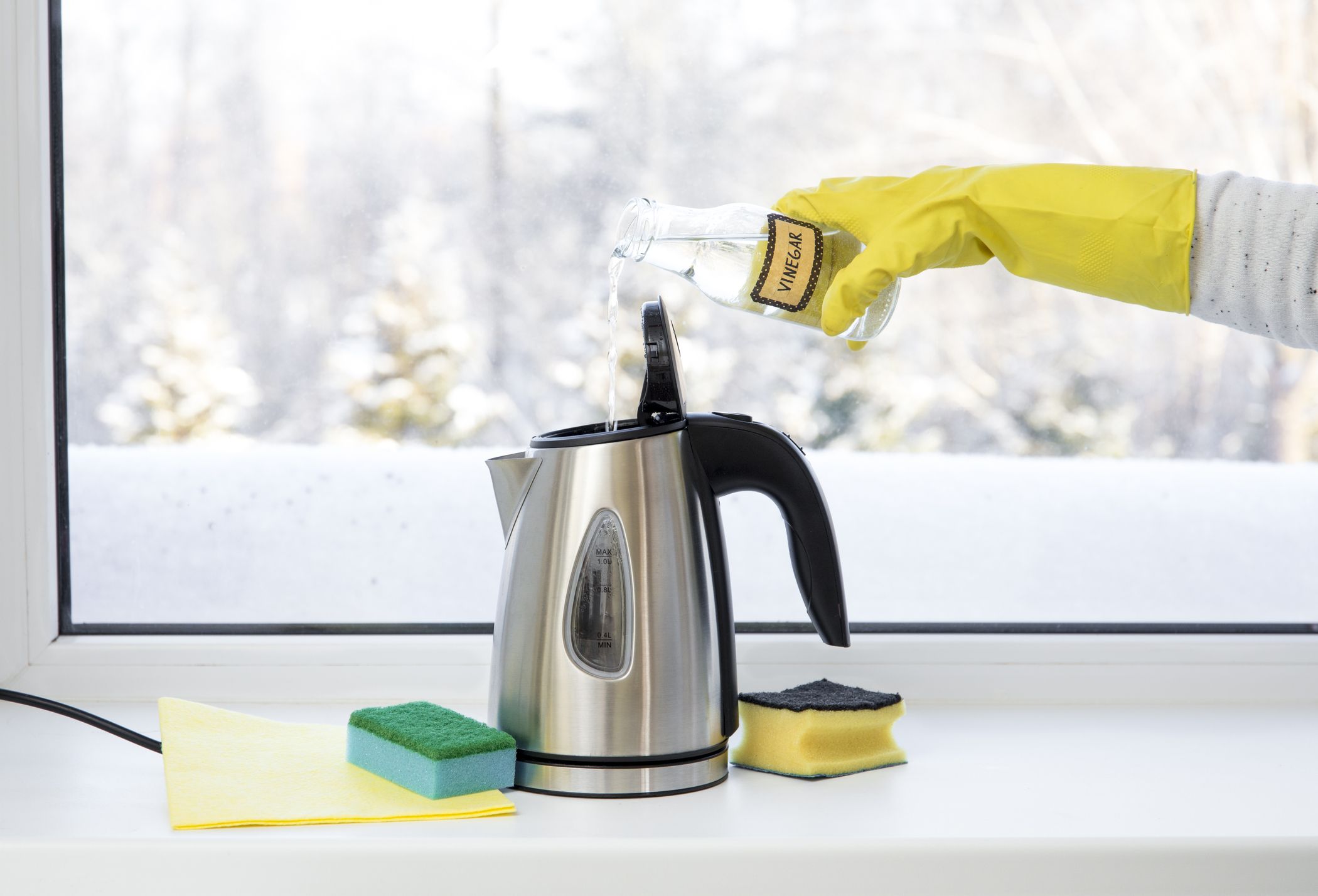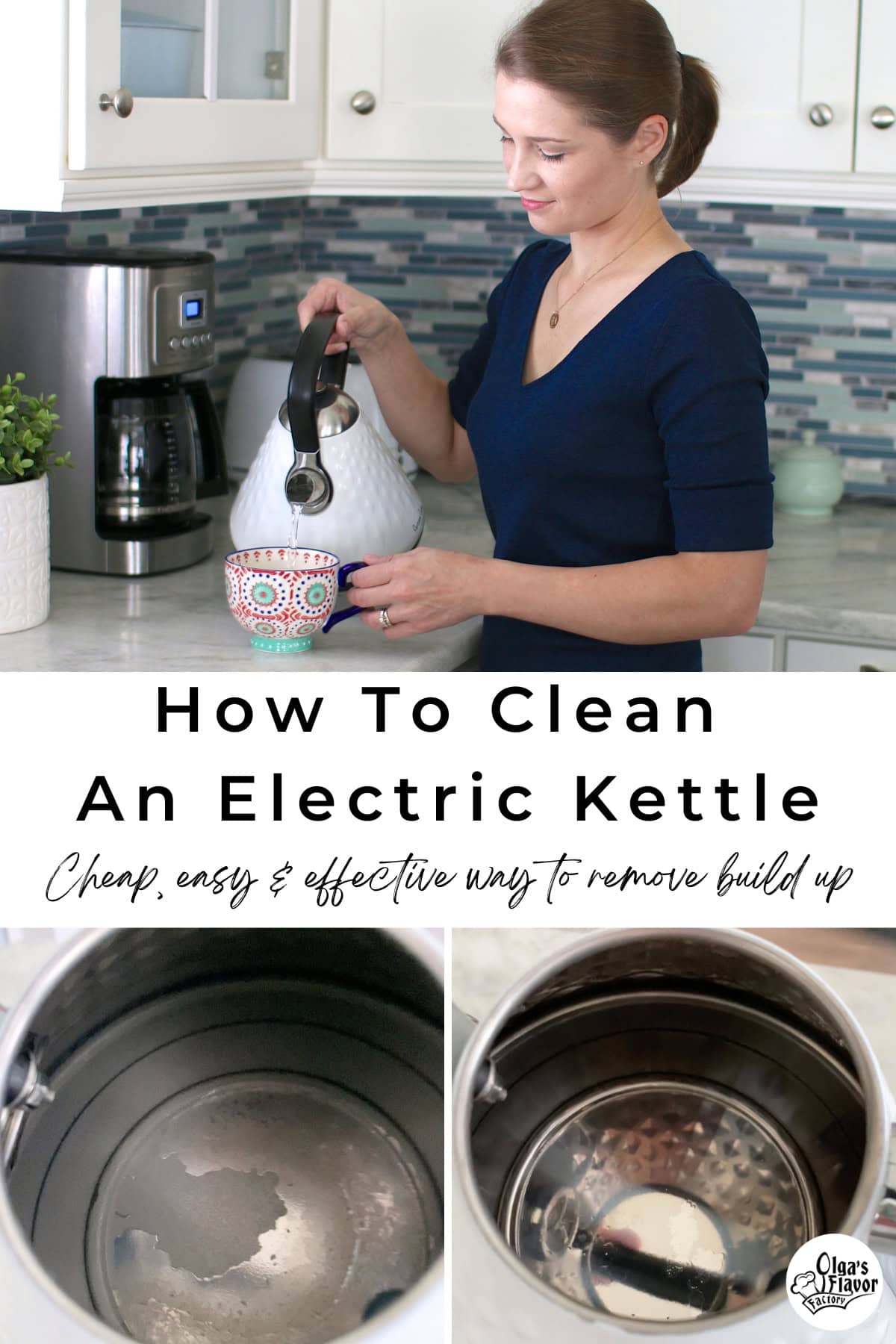How to Clean an Electric Kettle: Easy and Effective Methods

Cleaning an electric kettle is simple and quick. Regular cleaning keeps your kettle efficient and safe.
An electric kettle is a must-have in many kitchens. It boils water fast for tea, coffee, or cooking. But, over time, mineral deposits and stains can build up. These can affect the taste of your water and the kettle’s performance.
A dirty kettle can also become a breeding ground for bacteria. Learning how to clean your electric kettle properly ensures it stays in good condition. In this guide, you will discover easy steps to keep your kettle sparkling clean. Say goodbye to limescale and enjoy fresh, clean water every time. Keep reading to learn how to maintain your kettle with minimal effort.

Credit: www.countryliving.com
Introduction To Electric Kettle Cleaning
Electric kettles need regular cleaning. This keeps them working well. Cleaning also stops bad smells and tastes. Keeping your kettle clean will make it last longer. It will also help your tea or coffee taste better.
Regular cleaning removes limescale. Limescale is a hard white deposit. It builds up inside the kettle. It can make your kettle take longer to boil water. Cleaning also stops bacteria from growing. This is important for your health. A clean kettle means cleaner water.
| Issue | Effect |
|---|---|
| Limescale Build-up | Slow boiling, bad taste |
| Bacteria Growth | Health risks |
| Bad Odors | Unpleasant smell |
| Shorter Lifespan | Kettle breaks sooner |
Essential Cleaning Supplies
Natural Cleaning Agents can be very effective. Use white vinegar or lemon juice to remove limescale. These are safe and non-toxic. Mix equal parts of vinegar and water. Pour this into the kettle and let it sit for an hour. Then, boil the solution. Discard the liquid and rinse the kettle well. Use lemon juice in the same way. It will also leave a fresh smell.
Commercial Cleaning Products are also an option. These are made to dissolve limescale. Follow the instructions on the package. Usually, you mix the product with water. Fill the kettle and let it sit. Boil the solution if needed. Empty the kettle and rinse it well. Make sure no residue is left.
Pre-cleaning Preparations
Unplug the electric kettle. Let it cool down before you touch it. This is important to avoid burns. Always ensure the kettle is not hot. Touch it gently to check.
Empty any remaining water in the kettle. Pour it out into the sink. Make sure there is no water left inside. This makes the cleaning process easier.
Descaling With Vinegar
Mix equal parts of vinegar and water. Pour the solution into the kettle. Fill until it covers the bottom. This will help to break down the scale. Use white vinegar for best results. Avoid using flavored vinegar.
Turn on the kettle and let it boil. Once boiled, turn it off. Let the vinegar solution sit for 20 minutes. This helps to dissolve the scale. Pour out the solution. Rinse the kettle with fresh water. Fill the kettle with clean water. Boil again to remove the vinegar smell. Pour out the water and rinse once more.
Using Lemon For A Fresh Clean
Squeeze the juice of one lemon into a cup of water. Pour this lemon solution into the kettle. Add the lemon peel for extra cleaning power. Let the mixture sit for 30 minutes. This helps break down any mineral deposits.
Turn on the kettle and let the solution boil. This will loosen any build-up. After boiling, unplug the kettle. Use a soft sponge to scrub the inside. Rinse with clean water to remove any lemon residue. Your kettle will smell fresh and clean.
Baking Soda For Stubborn Stains
Make a thick paste with baking soda and water. Apply the paste to the stains inside the kettle. Let it sit for 15 minutes.
Use a soft sponge to scrub the stains. Rinse the kettle with warm water. Check if the stains are gone. Repeat if needed.
Maintaining Your Kettle
Clean your electric kettle often. Daily cleaning keeps it in good shape. Remove any water after each use. Wipe the inside dry. Once a week, descale the kettle. Use a mix of water and vinegar. Boil this mix, then rinse well. This removes limescale and other buildup. Avoid harsh chemicals. They can damage the kettle.
Store the kettle in a cool, dry place. Keep it away from heat. Heat can damage the kettle. Wrap the cord neatly. This keeps it safe. Do not store with water inside. This can cause mold. Ensure the lid is closed. This prevents dust from getting inside. Check the kettle before each use. Make sure it’s clean and ready.

Credit: www.olgasflavorfactory.com
Troubleshooting Common Problems
Cleaning an electric kettle is simple. Mix water with vinegar, boil, let it sit, then rinse thoroughly. This removes mineral build-up.
Persistent Odors
Persistent odors can be annoying. Start by filling the kettle with water. Add a few tablespoons of baking soda. Boil the mixture, then let it cool. Dump the water and rinse the kettle. Repeat if the smell remains. Always dry the kettle well. This prevents new smells.
Mineral Deposits
Mineral deposits can look bad. Fill the kettle with equal parts water and vinegar. Boil the mixture and let it sit for an hour. Pour out the solution and scrub the inside with a soft brush. Rinse the kettle thoroughly. Boil fresh water and dump it to remove any vinegar taste. Regular cleaning keeps the kettle in good shape.

Credit: www.youtube.com
Conclusion
Keeping your electric kettle clean is simple and essential. Regular cleaning ensures better performance. It also extends the kettle’s lifespan. Use vinegar or lemon for effective descaling. Rinse thoroughly to remove any residue. Follow these steps regularly. Enjoy a cleaner, healthier kettle.



